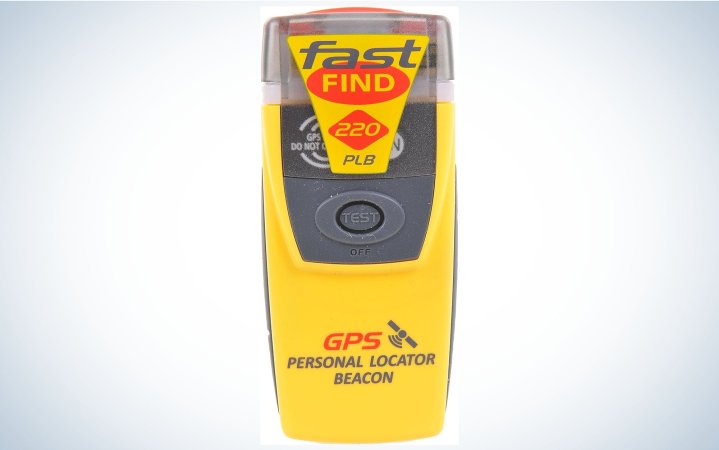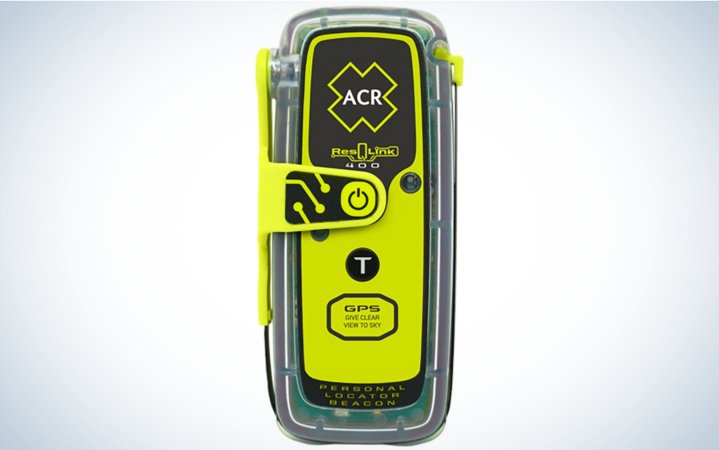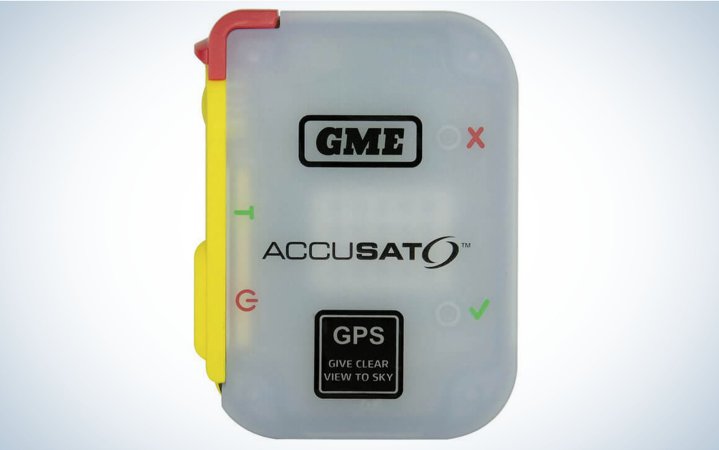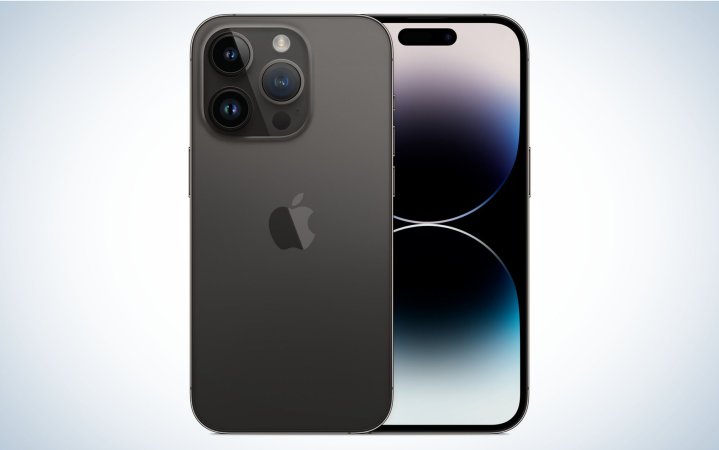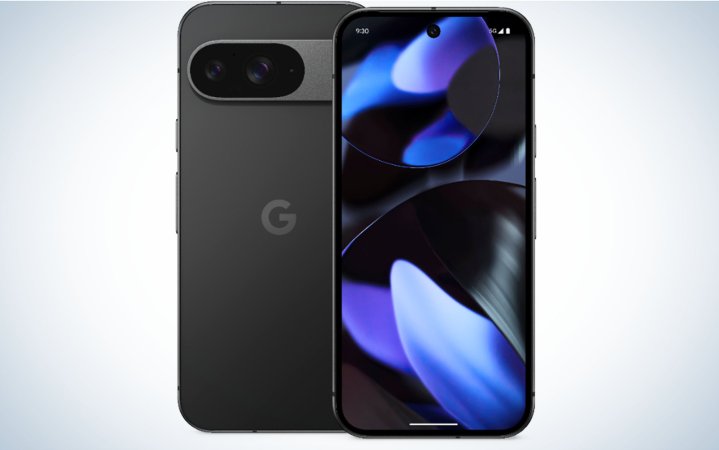We may earn revenue from the products available on this page and participate in affiliate programs. Learn More ›
If you spend significant time in the outdoors, then a personal locator beacon or satellite messenger should be in your pack. While these devices vary from single-use distress signals to full-blown phones that can be used in virtually any corner of the world, they all have the power to alert authorities when you are in trouble and — most importantly — share your GPS coordinates. While many individuals prefer the versatility of a satellite messenger, there are many situations where a personal locator beacon is the right choice. Here are our picks for the best personal locator beacons available today.
| Award | Personal Locator Beacon | Price | Subscription Needed? | Weight | Battery Lifespan | Operational Life | Waterproof to | Satellite Network |
|---|---|---|---|---|---|---|---|---|
| Best Overall | Ocean Signal rescueME PLB1 | $370 | No | 4.1 oz | 7 years | 24 hours | 15 meters | Cospas-Sarsat |
| Best Budget | McMurdo FastFind 220 | $250 | No | 5.4 oz | 6 years | 24 hours | 10 meters | Cospas-Sarsat |
| ACR ResQLink View | $435 | No | 5.2 oz | 5 years | 28 hours | 10 meters | Cospas-Sarsat | |
| ACR ResQLink 400 | $380 | No | 5.2 oz | 5 years | 24 hours | 10 meters | Cospas-Sarsat | |
| GME MT610G | $460 | No | 5.6 oz | 7 years | 24 hours | 4 meters | Cospas-Sarsat | |
| Best for Check-ins | SPOT Gen4 | $150 | Yes | 5 oz | 4 AAA | N/A | 4 meters | Globalstar |
Over the last couple of years, smartphone companies have also started to provided satellite-enabled SOS capabilities.
| Smartphone | Price | Subscription Needed? | Satellite Network |
|---|---|---|---|
| Apple iPhone 14 (and higher) | $600 | Free for two years | Globalstar |
| Google Pixel 9 | $800 | Free for two years | Skylo |
Satellite Messengers vs. Personal Locator Beacons
The terms “personal locator beacon” and “satellite messenger” get used interchangeably, but there are important differences to understand before you make a purchase. The biggest one is that satellite messengers have two-way communication, and PLBs only have one-way communication.
Unsurprisingly, most people opt for the two-way communication provided by the best satellite messengers. But there are a couple of advantages to personal locator beacons. The first is that they are typically less expensive; many have only an upfront cost, no subscription required. For people who actually like to be off grid when they are off grid, PLBs allow you to contact emergency services in the event of disaster but do not allow anyone to get in touch with you. But the most important difference is that you can choose a personal locator beacon that is on the Cospas-Sarsat network.
The Cospas-Sarsat network has been around since the 1970s, when the United States, Canada, France, and the Soviet Union decided to join forces and try and do something about all those planes and boats that were vanishing without a trace. They pooled their satellite resources together and created a non-profit cooperative that could pinpoint the GPS locations of individuals who sent out distress signals. Today’s Cospas-Sarsat network is similar in design, just with more members and more satellites at its disposal. It’s widely regarded as the most reliable of the satellite networks for SOS purposes. But, it all comes with a catch, which is that it does not allow for messaging or any kind of two-way communication. All you get is the SOS button.
Whether the reliability of a decades-old satellite network that has racked up over 18,000 successful rescues to date gives you greater peace of mind than the potential for two-way communication is a personal choice. In our testing, the Iridium network, used by the likes of Garmin and Zoleo, was very reliable, and I wouldn’t hesitate to take a PLB or satellite messenger that used that network into the backcountry with me.
Best Personal Locator Beacons: Reviews & Recommendations
Best Overall: Ocean Signal rescueME PLB1
Pros
- Lightweight
- Very water resistant
Cons
- More expensive than my best budget pick
Specs
- Battery Lifespan: 7 years
- Operational life: 24 hours
- Waterproof to 15 meters
Key Features
- Price: $370
- Weight: 4.1 ounces
- Satellite Network: Cospas-Sarsat
The Ocean Signal rescueME PLB1 is the best choice for most adventurers. It will last seven years before you need to have the battery replaced. It’s waterproof to 15 meters. It’s small and is lighter weight than other personal locator beacons, on par with the weight and size of satellite messengers. It manages all this while still coming in at a fairly reasonable price: $370, which breaks down to about $50 a year. But most importantly, it’s on the Cospas-Sarsat network.
Best Budget: McMurdo FastFind 220
Pros
- Low price
Cons
- A little heavy
Specs
- Battery Lifespan: 6 years
- Operational Life: 24 hours
- Waterproof to 10 meters
Key Features
- Price: $250
- Weight: 5.4 ounces
- Satellite Network: Cospas-Sarsat
The McMurdo Fast Find 220 impressed with its low price, which works out to about $40 over six years. The only real ding here is that It’s a little on the heavy side for beacons, but it does feature an LED signal light and Morse code SOS flashing light, which you can use to help attract rescuers’ attention.
ACR ResQLink View
Pros
- Long operational life
Cons
- Expensive
Specs
- Battery Lifespan: 5 years
- Operational Life: 28 hours
- Waterproof to 10 meters
Key Features
- Price: $435
- Weight: 5.2 ounces
- Satellite Network: Cospas-Sarsat
The ACR ResQLink View shared many features with the other personal locator beacons that I looked at: relatively lightweight, excellent water resistance, integrated strobe, and uses the Cospas-Sarsat network. This one, however, was slightly more expensive than other options for a few more features. It boasts a minimum operational life — how long the unit will send out an emergency signal before the battery dies — of 28 hours, four more hours than other options on this list. It also has a a digital display that shows live beacon status and GPS coordinates, which can help provide peace of mind over the simple blinking light that most of these sport.
ACR ResQLink 400
Specs
- Battery Lifespan: 5 years
- Operational Lifespan: 24 hours
- Waterproof to 10 meters
Key Features
- Price: $380
- Weight: 5.2 ounces
- Satellite Network: Cospas-Sarsat
The ACR ResQLink 400 is similar to the ResQLink View, except that it is lower in price, does not have a screen, and has a slightly shorter operational lifespan, similar to other PLBs that I looked at. Snag this one if it’s on sale; otherwise, I’d go with the similarly priced and lighter weight Ocean Signal rescueME.
GME MT610G
Pros
- Good battery lifespan
Cons
- Not as wateproof as other options
Specs
- Battery Lifespan: 7 years
- Operational Life: 24 hours
- Waterproof to 4 meters
Key Features
- Price: $460
- Weight: 5.6 ounces
- Satellite Network: Cospas-Sarsat
The GME MT410G is both heavier and more expensive than other options, but it does use the Cospas-Sarsat network and boasts an impressive battery lifespan of seven years.
SPOT Gen4
Pros
- You can send check-in messages
- Low upfront cost
Cons
- Requires subscription
- Uses less reliable Globalstar network
Specs
- Battery Lifespan: Uses 4 AAA batteries
- Operational Life: N/A
- Waterproof to 4 meters
Key Features
- Price: $150 (also requires active subscription)
- Weight: 5 ounces
- Satellite Network: Globalstar
The SPOT was the first personal locator beacon I ever owned, and like a lot of backcountry adventurers, I mainly got it to let my mom know I was OK. That’s because while the SPOT does not allow for two-way satellite communication, it’s more than just a personal locator beacon: you can pre-record a couple of messages and send those out (along with your GPS coordinates) without triggering a whole search-and-rescue operation. In essence, it’s a satellite GPS tracker. As near as I can tell there are only two obvious functions for this: 1) to let people in the frontcountry know that you are OK (useful for longer trips) and 2) to request pickup from your emergency contact in the event that you run out of food along a remote forest service road but don’t need to be rescued immediately per se.
The problem with the SPOT Gen4 is that it uses the Globalstar network. In OL’s test of the best satellite messengers, we found that it is not as consistent as messengers that were on the Iridium network, and that it sometimes indicated messages were sent that were then not received in the frontcountry.
Apple iPhone 14 (and higher)
Pros
- Includes two-way messaging that is free for two years
Cons
- Uses less reliable Globalstar network
The Apple iPhone satellite messenger was the first smartphone to integrate satellite SOS capabilities and, more recently, satellite messaging capabilities. However, there is one major issue with the Apple iPhone’s satellite messenger capabilities: it’s on the Globalstar network. This is not a best-in-class network and in our testing, it was not as reliable as we had hoped.
If you have an iPhone 14, you should absolutely update and enable this service, as it’s great to have a backup mode of communication in the event of an emergency. However, if reliable SOS capabilities are what you are after, choose another pick on this list.
Google Pixel 9
Another smartphone that has entered the satellite messenger space is the Google Pixel. Currently, the phone only offers SOS emergency services, not two-way satellite messaging. It also uses Skylo (with SOS response being handled by Garmin’s team), a newer network (rented in this case) that currently only provides coverage to Europe and parts of North America.
Because of the lack of two-way satellite messaging and the relatively newness of the Skylo network, it is difficult to evaluate the effectiveness of its SOS capabilities compared to Globalsar, Iridium, or the Cospas-Sarsat network. We’ll be continuing to evaluate and report on its effectiveness as testing capability and information changes.
What to Consider Before Buying a Personal Locator Beacon or Satellite Messenger
Satellite Network
Instead of cellphone towers, personal locator beacons and satellite messengers communicate with satellites that are orbiting the earth. If you’ve ever noticed that it takes a while for your message to go out, that’s because your device is waiting for a satellite to come back into range. The reason for this gap is that it’s very expensive to send satellites up into orbit. So it’s no surprise here that the most trusted emergency satellite network is Cospas-Sarsat, a nonprofit collective of over 40 countries, composed of five low-earth orbiting (LEO) satellites, seven geostationary orbiting (GEO) satellites, and 35 medium-altitude-earth orbiting (MEO) satellites.
Part of why Cospas-Sarsat is considered the most reliable is that it’s simply been tested more than any other — the first rescue on the network occurred in 1982. But there is a downside: Because it is a nonprofit cooperative, Cospas-Sarsat only supports emergency communications. So there is no way to arrange a pickup, confirm a rendezvous, or even just ping loved ones to let them know you are OK.
To fill that gap, a number of privately owned networks have sprung up to support two-way messaging through their own system of satellites. Of these, the two that have emerged as the leaders in backcountry communication are Globalstar (which has 48 satellites) and Iridium (75).
Weight
When you’re going into remote areas, odds are that you will want to make every ounce count, and that includes your personal locator beacon or satellite messenger. All PLBs are designed to be able to be carried on your person. They should never be so large that you hesitate attaching one directly to yourself or your backpack. That said, there is still a range of sizes available in today’s PLBs. The smallest devices come in it at around 4 ounces, while larger devices can weigh upwards of 7 ounces. Lightweight devices may have less features than larger, bulkier ones, but what you sacrifice in functionality you gain in portability.
Lifespan
An important difference between personal locator beacons and satellite messengers is how the internal batteries operate. With satellite messengers, the batteries only last a few days to a few weeks at a time (sometimes even less in the case of Zoleo), but can be recharged by the user. PLB batteries last for years, but once it’s run its course, you’ll need to contact a certified technician to replace it.
FAQs
Whether or not you need a personal locator beacon depends on how much time you spend exploring the backcountry, especially places you aren’t familiar with and where other people aren’t close by. If you spend a lot of time exploring remote areas, you should purchase a PLB.
The most affordable PLBs are between $150 and $250. The standard PLB is around $350, while the top-rate PLBs are upwards of $450.
While you do not need a subscription to use a personal locator beacon, you do need a subscription to use satellite communication devices. Subscriptions typically vary between ten dollars per month (allowing only a limited number of text messages, up to sixty-five dollars per month, for unlimited text messages.
Personal locator beacons typically come with built-in batteries that last for five years. Satellite messengers also come with built-in batteries, which can (and should) be recharged before the start of each trip.
Personal locator beacons do not come with text messaging functionality, but most (although not all) satellite messengers do. Be sure to check the subscription plan of your satellite messenger to see how many text messages you are allowed to send per month.

Final Thoughts
A personal locator beacon is a must-have safety device for any hunter, backpacker, angler, or adventurer who spends significant time in the backcountry. Make them a part of your standard survival kit, an emergency radio and one of the best emergency blankets. While there is increasing cell coverage in the backcountry (including through satellite networks, like Starlink), the tried and true SOS capabilities of the Iridium and Globalstar networks make one of these devices a must-have for the backcountry. While most individuals — whether you are out for the day or for the week — will benefit most from the lightweight Garmin Inreach Mini, consider the cost, weight, and functionality of your satellite messenger before making a final purchase decision.


